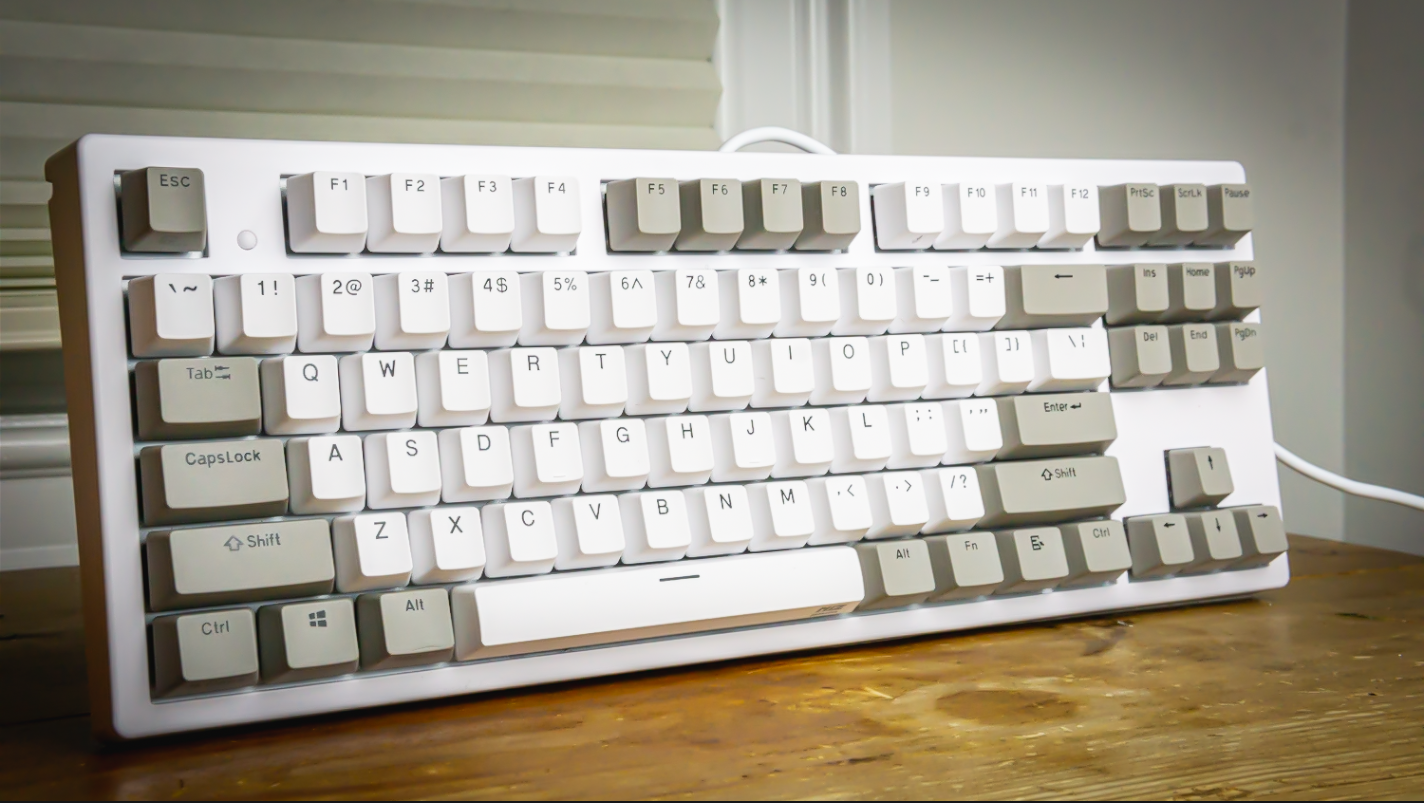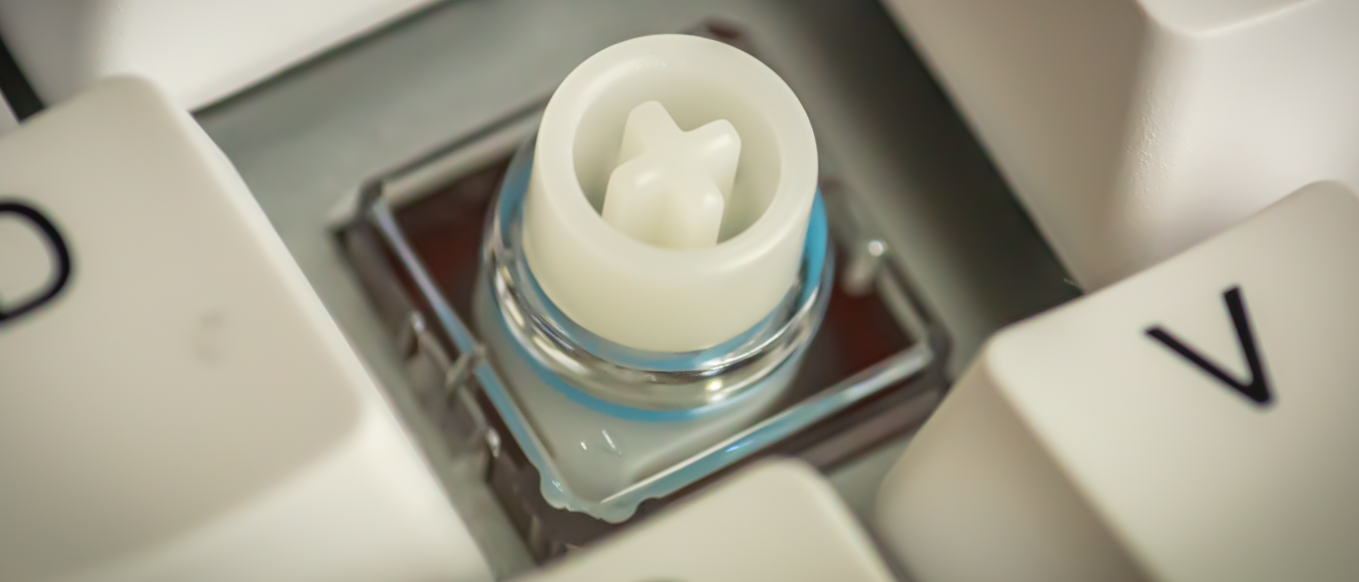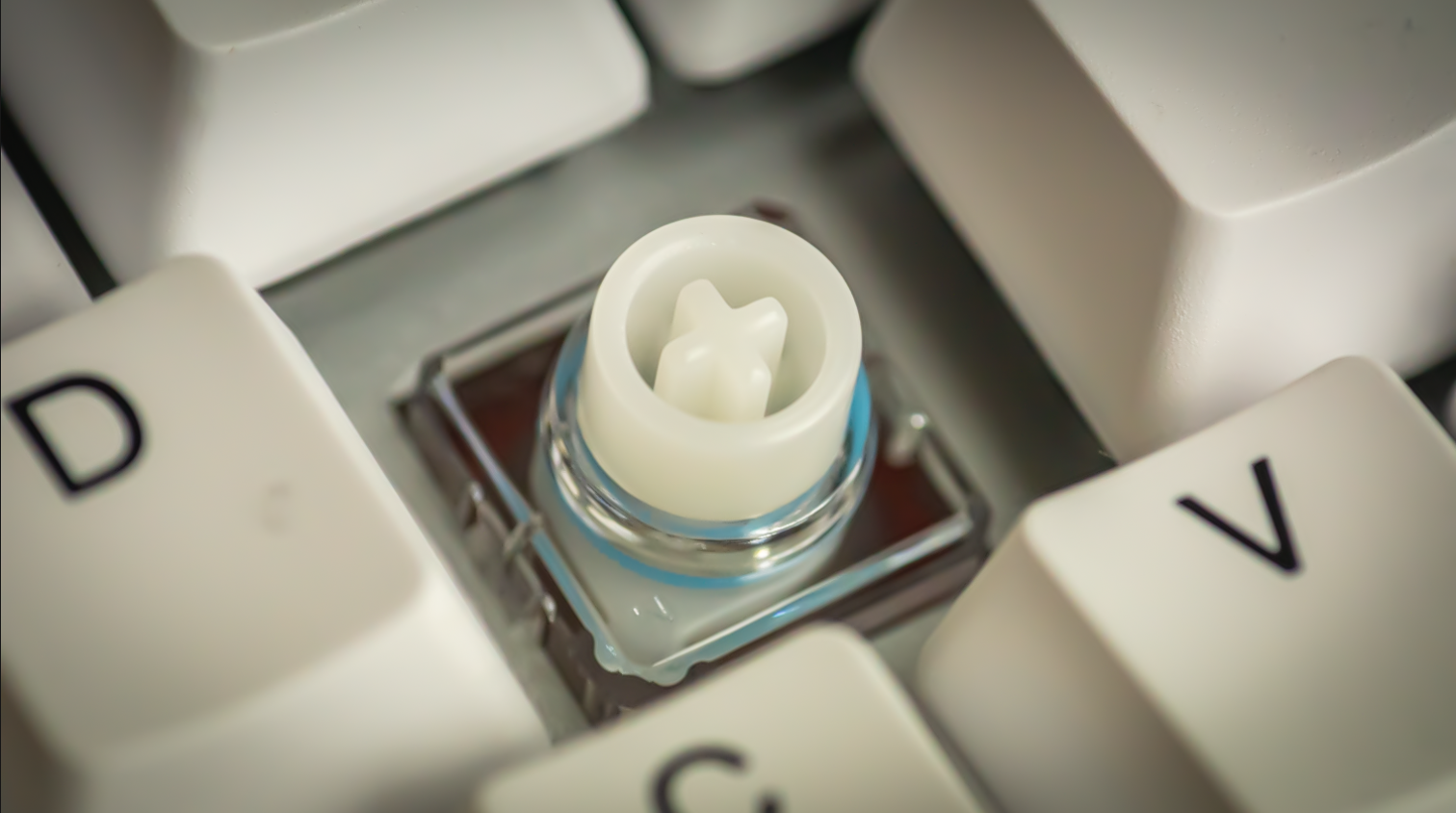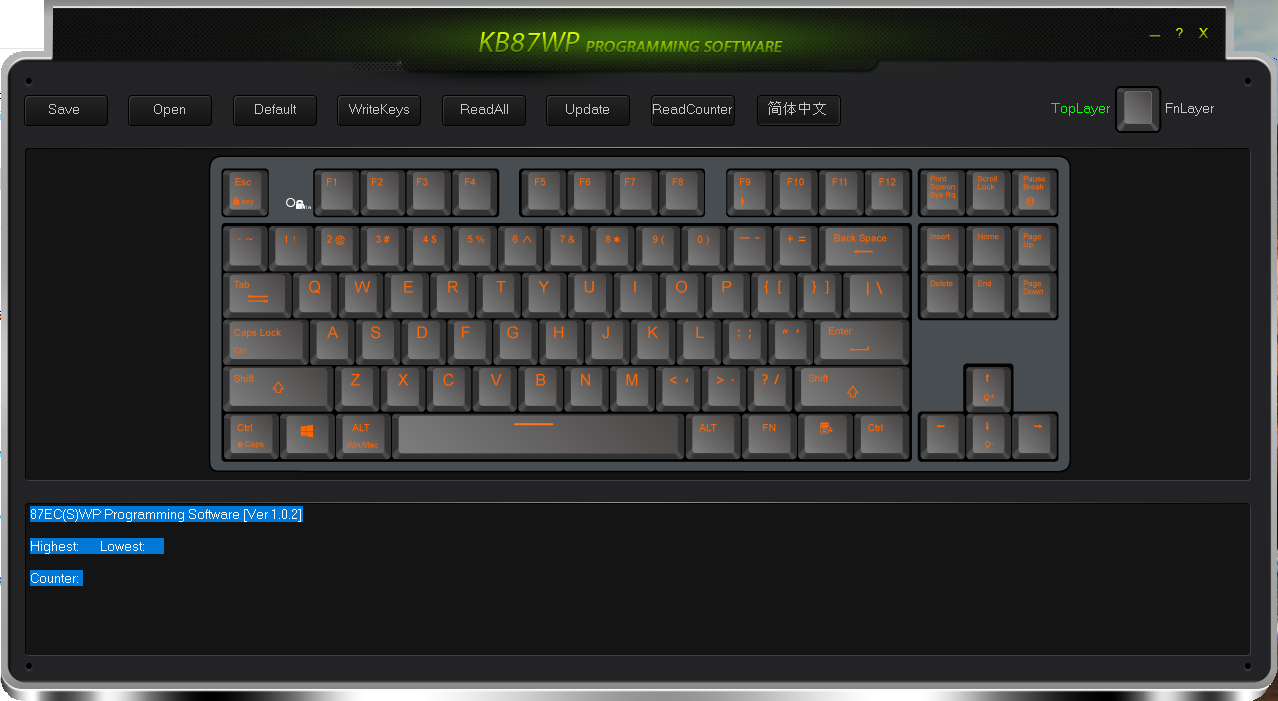Tom's Hardware Verdict
The NIZ WP87 is a very relaxing, soft and quiet keyboard whether you’re gaming or using it as an everyday keyboard. But its costar stabilizers make larger keys rattle, plus they’re hard to lube.
Pros
- +
+ Very high-quality keycaps
- +
+ Adjustable keystroke
- +
+ Waterproof
- +
+ Unique typing sound
- +
+ Simple software design
Cons
- -
35g is a bit too light
- -
Non-removable cable
- -
Terrible stabilizers
- -
Too expensive
Why you can trust Tom's Hardware
People tend to assume that there are only two types of keyboards on the market, membrane or mechanical. And while that is a fair assumption to make, there’s actually another option that fits in between them: electro-capacitive switches. These bridge the two together by utilizing rubber domes for tactility and silence, but also some mechanical switch features like a spring. They also don’t actuate like membrane keyboards, instead activating based on differences in electrical charge— this means that you can adjust their actuation distance.
NIZ WP87 Specs
| Switches | Electro-capacitive |
| Lighting | N/A |
| Onboard Storage | N/A |
| Media Keys | Need to be programmed |
| Connectivity | Non-removable USB Type-A |
| Cable | 6 inches USB-A rubber cable |
| Additional Ports | N/A |
| Keycaps | PBT plastic |
| Software | KB87WP |
| Dimensions (LxWxH) | 14.5 x 5.5 x 1.1 inches (368.3 x 139.7 x 27.9mm) |
| Weight | 1.84 pounds (834g) |
Design of the NIZ WP87



The NIZ WP87 is a $209 waterproof IP68 tenkeyless mechanical keyboard that features electro-capacitive switches, PBT keycaps and a vintage look and feel thanks to the somewhat coarse plastic frame.
The design of the WP87, or rather all electro-capacitive keyboards, is based on the company Topre and its keyboards.
Topre (Toe-Pruh) is a Japanese company that makes a lot of things besides keyboards, like air-conditioning parts. I know the idea of making keyboards and air-conditioning parts is night and day, but keyboard enthusiasts covet Topre keyboards for their unique switch design. They tend to be extremely expensive, though.
Silent mechanical switches have little silencing dampeners on the legs of the stem, which causes their bottom-out feel to be a bit mushy, and that’s where Topre comes in. Its switches work via capacitance detection and so you don’t need those dampeners. That lets them be relatively silent and tactile but not mushy.
When I got the WP87, I felt like I picked up a retro keyboard from a thrift store because of its white and grey colorway, accompanied by a plastic case.
While it may look retro, its technology is not; the biggest thing about all of NIZ’s keyboards is their switches because they feature both a rubber dome and a spring. This is ironic because rubber domes are found on membrane keyboards, which do not feature any springs at all. But in this case, we have both, and it provides a very interesting typing experience which I’ll talk about later on.
Get Tom's Hardware's best news and in-depth reviews, straight to your inbox.
Moving on, the rest of the keyboard is relatively similar to what we usually get on high-end enthusiast boards, like flip-up feet, cable routing cut-outs and a lack of dedicated media keys *sigh*.
While I almost always prefer a detachable cable, the fixed one on the WP87 works because it gives it more of a retro look, and I almost kind of hope that it turns yellow over time like an old board.
I mentioned earlier that this keyboard is IP68 waterproof, so to test that, I laid the board down on my kitchen island and dumped water on it as if it said something insulting. Low and behold, after a quick wipe, it was working perfectly fine. I’m not going to lie; the name electro-capacitive kind of freaked me out here because electricity and water do not mix well, but I was pleasantly surprised.
Typing Experience on the NIZ WP87
Electro-capacitive switches are almost like advanced membrane switches, because while they still utilize rubber domes, on top of each rubber dome is a spring and a plastic slide that makes contact with it. When combined, these create a slight tactile bump on each keystroke. As I said earlier, the end result produces a slight tactile bump without sounding clunky.
It’s a hot take, but I love membrane keyboards because I’m always more accurate with them than mechanical switches. However, I still prefer mechanical at the end of the day, thanks to their feedback and customizability. I love that electro-capacitive switches give you the best of both worlds, with a quieter, more elegant membrane sound but the tactility of a mechanical switch.
The tactile bump is smaller here, though, and feels almost like an over-lubed MX brown.
The operating force is also a bit too light for my taste; I tend to dabble with switches that feature 65g springs and the 35g operating force of the WP87 switches was a bit too light for me. However, the slight tactile bump provided just enough resistance to counter the lightness.
Because of the electro-capacitive switches, the sound of the board was very bubbly, and I say bubbly because typing on this board literally sounds like I am blowing bubbles with a straw. It is lovely, and stems from the keyboard’s rubber domes in combination with its plate and casing.
One unique benefit to the electro-capacitive switches is that you can adjust their actuation point from 2mm to 3mm, but after dabbling with it for a little while, I didn’t notice any difference at all.
With that said, the switches are pretty smooth and feel delicate when I bottom out, but they’re not the smoothest. For comparison, they’re around the same smoothness as any stock Gateron switch, but that’s okay because they’re different. There is so much more going on with NIZ’s electro-capacitive switches than the standard MX switch, so their unique nature is a worthy trade-off when we could have gotten just another MX switch clone keyboard instead.
Easily the worst part of this keyboard is the stabilizers, because for some reason, NIZ decided to use Costar stabilizers. Costar stabilizers aren’t like the usual Cherry stabilizers, which makes them a bit of a chore to work with because they don’t lock into place like Cherry stabilizers. When I was trying to lube them, one of the plastic pieces kept spinning around over and over and over. So, if you plan on lubing these stabilizers, take deep breaths because they will test your patience.
If you don’t plan on lubing them, the stabilizers will sound rattly. When I finished lubing the stabilizers, they still rattled enough to bother me, but it was a better overall experience for my effort.
While they get some hate from the mechanical keyboard community for being too tall, the keycaps included here are OEM profile and I love them. NIZ could’ve taken the easy way out by including dye-sublimated PBT keycaps, but instead, it used laser engraved PBT keycaps, which makes the legends and alphas look stunning.
The WP87 is overall a very comfortable board to type with; the feet underneath the board do a good job gripping to my mousemat, the keycap quality is fantastic and the quietness of the switches makes the board very peaceful to type with. But I really wish that NIZ used Cherry stabilizers here.
Gaming Experience on the NIZ WP87
We often see the best gaming keyboards equipped with 45g springs or magnets, but never electro-capacitive switches. Because the WP87 features switches as light as 35g, I was curious to see how they’d feel in-game.
I have been taking a break from Call of Duty: Black Ops Cold War because Call of Duty: Vanguard is out, so I played the (frankly, subpar) zombie mode in that to test this board.
The performance of the switches was interesting; I didn’t experience any input lag, but even though on paper the switches should be the fastest available due to their operating force. They felt no different than something like an MX Red in-game (which is still very fast, even if slightly heavier).
This isn’t a bad thing; I mentioned this in my Bakeneko60 review, but this keyboard could also definitely be a sleeper gaming wonder, especially with its “grandpa’s keyboard” styled colorway.
Still, even though I didn’t experience any issues in-game with the WP87, I just don’t feel comfortable with the idea of using it for a two-hour zombies bender, because of the delicate switch feedback.
Software
NIZ’s software for the WP87 is called KB87WP and it is just a remapping software: nothing more, nothing less. Since there are no dedicated media keys on the WP87, I thought they would be nested within the function layer, but I was wrong there. To control your media, you need to program it yourself, but this luckily isn’t very difficult.
After launching the software, you will need to hold FN+Pause, putting the keyboard into program mode. From there, you can remap any key to do whatever you want, so I made the Page Up and Page Down keys control my media.
When looking at the arrow keys on KB87WP, you will see that they are mapped to control backlight brightness, which is funny because there is no backlighting present on this board. Only the Pause key lights up, and that’s only when your board is set to programming mode.
Overall, there isn’t a lot to ramble on about with the NIZ’s remapping software. Because it doesn’t boot up automatically when your PC turns on, there aren’t any excess features, so it just does what it is supposed to do. Since a lot of boards come with bloated, always-on software, I appreciate that a lot.
Bottom Line
To sum it up, I really enjoy the NIZ WP87; the electro-capacitive switches provide a very delicate but satisfying feel when bottomed out, and the build quality is fantastic. On the outside, the keyboard also looks charmingly vintage with its white, laser-engraved PBT keycaps with grey accents surrounded by a somewhat coarse plastic case. The WP87 has a lot of good things going for it, but with a price of $209 (and because this is a new, 2021 version), the stabilizers should be of better quality.

Myles Goldman is a freelance writer for Tom's Hardware US. He reviews keyboards and cases.
-
mrv_co The 35g NIZ switches really need the optional +10g springs installed to come alive. They should have been included in the box. NiZ also offers their boards with 45g domes (I still prefer the 35g domes w/ the optional springs). I haven't had any major complaints with the costar stabs on the NiZ boards that I've owned, but they came lubed from the factory and sometimes that lube needs to be spread around a bit better. Regardless, I still prefer my HHKB Hybrid Type-S, but NiZ boards are a great option if you prefer a more traditional layout. A comparison review between a NIZ x87 TKL and a RealForce R2 TKL would be interesting.Reply

